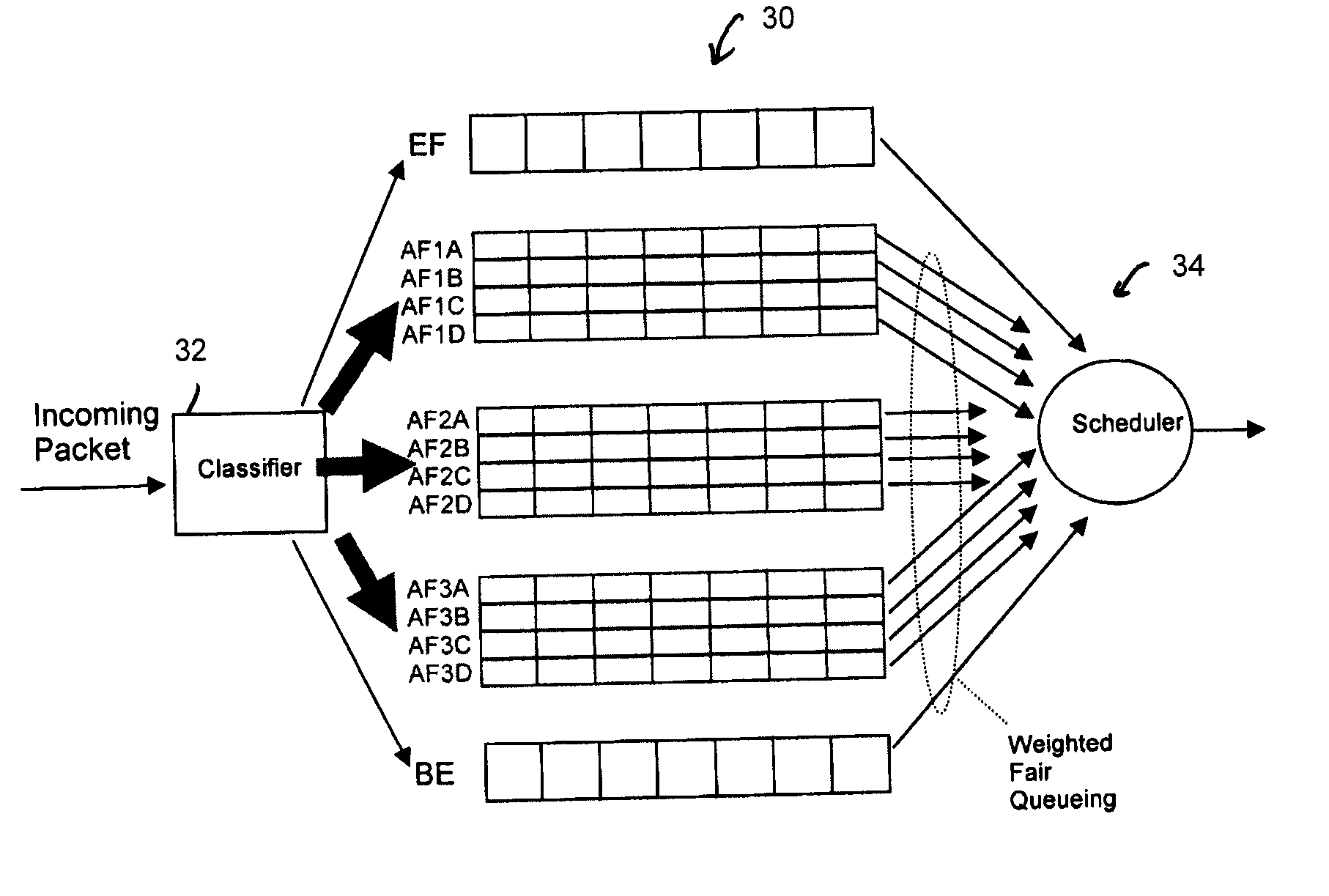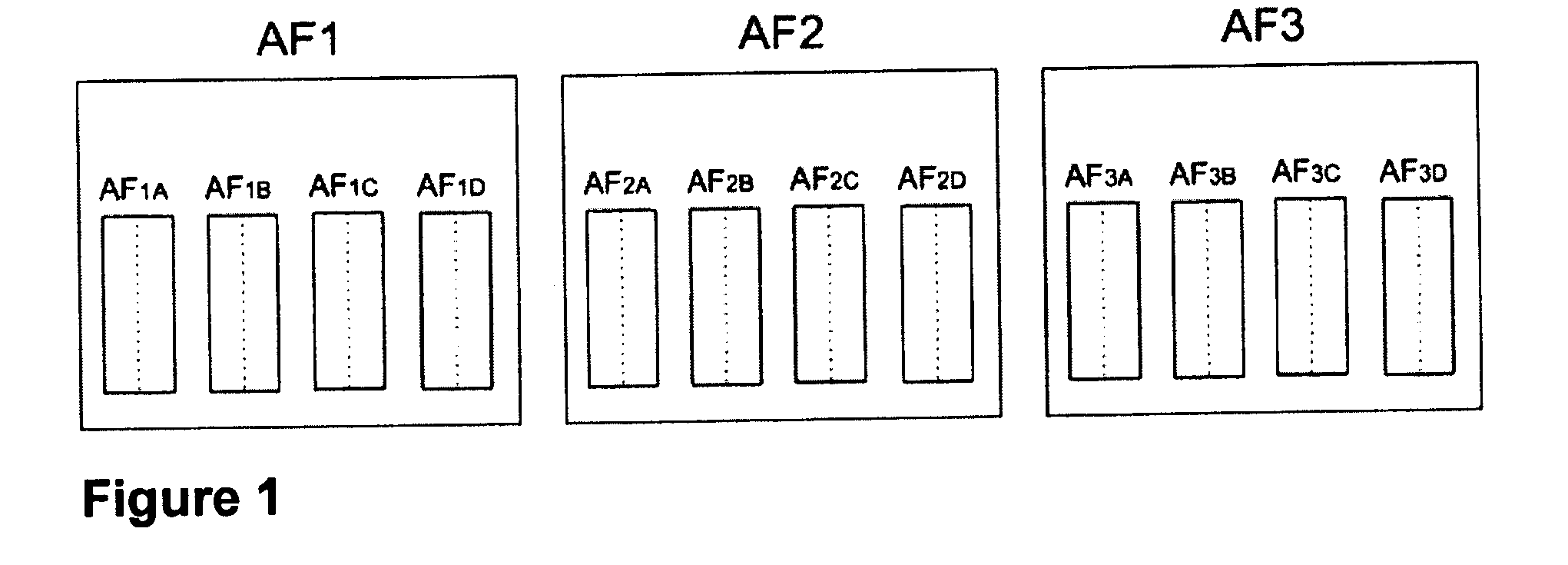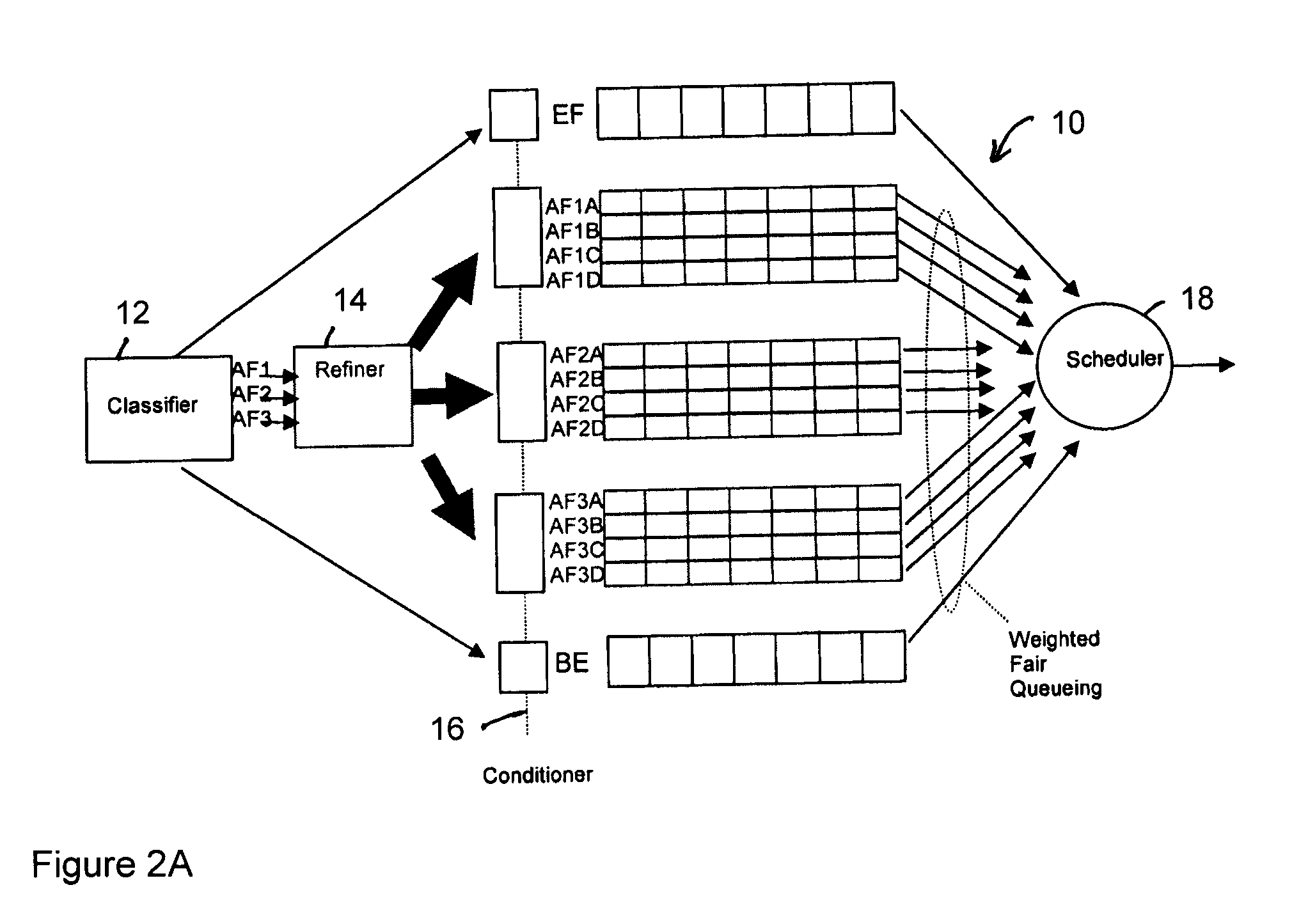Refined Assured Forwarding Framework for Differentiated Services Architecture
a forwarding framework and service technology, applied in the field of refined assured forwarding framework for differentiated services architecture, can solve the problems of inconvenient resource reservation, and inconvenient routing of large volume of active flows
- Summary
- Abstract
- Description
- Claims
- Application Information
AI Technical Summary
Problems solved by technology
Method used
Image
Examples
Embodiment Construction
1. The Refined Assured Forwarding Framework
[0040] In previous studies [17, 18], the inventors have shown that the performance of heterogeneous networks can be enhanced by dividing flows with similar characteristics into groups rather than aggregating or fully segregating them. This approach brought in a considerable degree of refinement over the integration versus segregation studies reported previously [19, 20]. In this invention, we propose a framework based on a similar concept to alleviate the intra-class unfairness within an AF DiffServ class. We term this approach a Refined Assured Forwarding or RAF framework. The basic idea in the RAF framework is to provide an additional layer of classification independent of the DiffServ classification criteria. Within each AF class, flows are further classified into groups based on their average packet size. This classification can be, for example, done by edge routers, where flows can be tracked. For core routers, the additional classifi...
PUM
 Login to View More
Login to View More Abstract
Description
Claims
Application Information
 Login to View More
Login to View More - R&D
- Intellectual Property
- Life Sciences
- Materials
- Tech Scout
- Unparalleled Data Quality
- Higher Quality Content
- 60% Fewer Hallucinations
Browse by: Latest US Patents, China's latest patents, Technical Efficacy Thesaurus, Application Domain, Technology Topic, Popular Technical Reports.
© 2025 PatSnap. All rights reserved.Legal|Privacy policy|Modern Slavery Act Transparency Statement|Sitemap|About US| Contact US: help@patsnap.com



